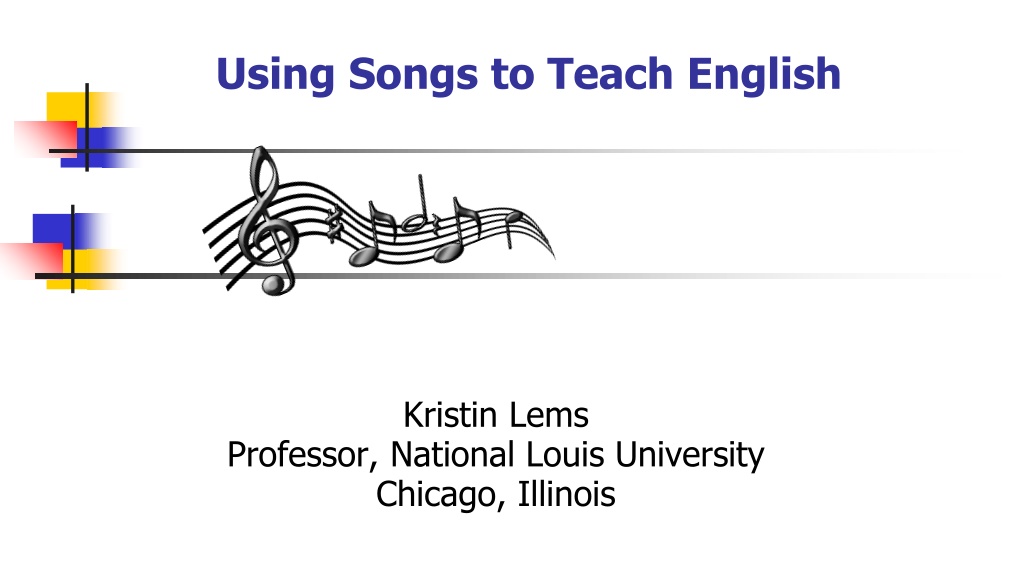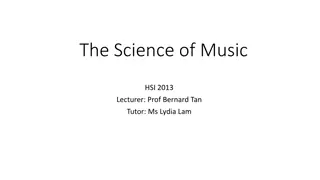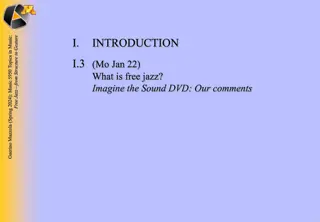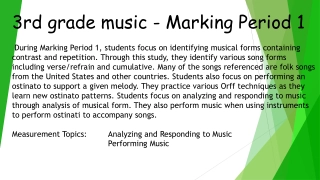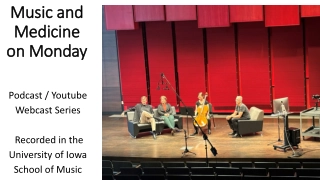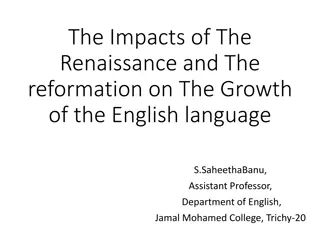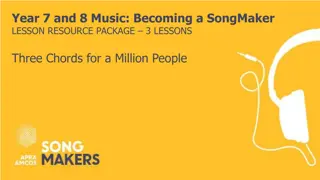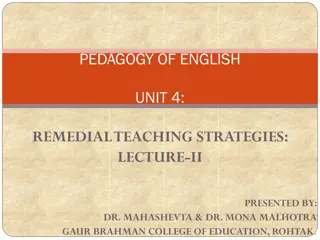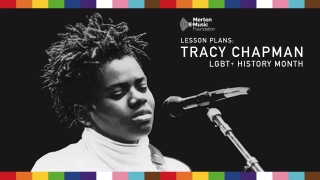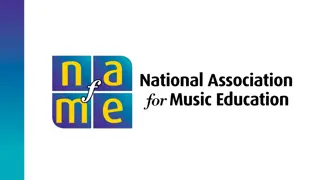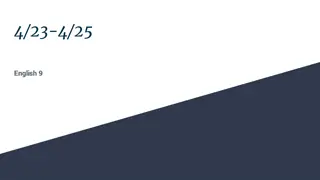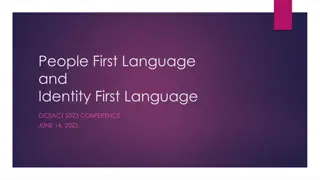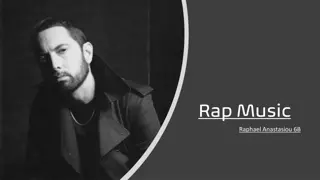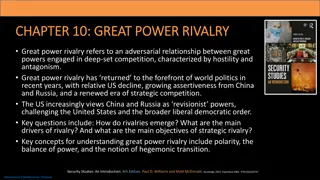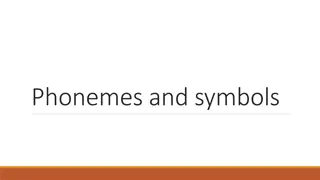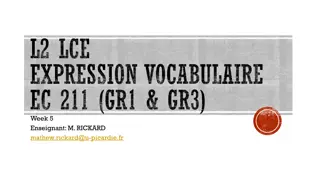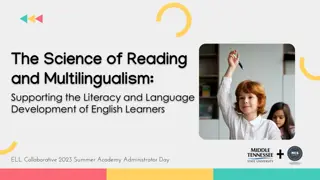Exploring the Power of Music in English Language Teaching
Delve into the fascinating realm of integrating music in language education with insights on how music influences the brain, enhances learning, and triggers emotional responses. Discover practical ways to incorporate songs for effective ESL/EFL instruction, benefiting language acquisition and student engagement.
Download Presentation
Please find below an Image/Link to download the presentation.
The content on the website is provided AS IS for your information and personal use only. It may not be sold, licensed, or shared on other websites without obtaining consent from the author. Download presentation by click this link. If you encounter any issues during the download, it is possible that the publisher has removed the file from their server.
Presentation Transcript
Using Songs to Teach English Kristin Lems Professor, National Louis University Chicago, Illinois
Goals for Today: 1. Learning about music and the brain 2. Seeing the advantages of music in the language classroom 3. Learning 5 ways to use music and song in ESL/EFL classrooms 4. Finding and choosing music resources
Poll #1 I have never used music and song to teach English. I have used music and song to teach English once or twice. I sometimes use music and song to teach English. I use music and song to teach English almost every day.
Music and the Brain: Where does music reside in the brain?
Playing music is like setting off fireworks in the brain!
Brocas Area Left side Identified in 1800 s as place where patterns and categories are recognized and stored Musical and language patterns!! Place speech is produced
Brocas area shows activity when people hear an unpleasant musical sequence and also when they hear an ungrammatical sentence.
Wernickes Area More on left side Closely connected to Broca s Place that speech is recognized and processed
The Limbic System The deep brain above the brainstem Controls emotions and stores memories Regulates smell, memories, sweating
The limbic system responds to happy music!
Music touches the emotions In a survey of hundreds of young adults, 70% reported that music was important to their lives because it elicits emotions and feelings. Same percentage for women and men - 1995 Jaak Panksepp, Bowling Green State University, Ohio
Poll #2 Music touches my emotions When I hear music, it brings back powerful memories I associate certain events in my life with particular songs
An interest in a performing art leads to a high state of motivation. That in turn produces the sustained attention and the training of attention that leads to improvement in other cognitive domains. (Dana Foundation Report, 2008)
Music Learning and Bilingualism both have demonstrated mental advantages hold back mental decline in old age are more powerful when started at an early age
I would challenge everybody to come up with another activity that engages as much real estate in the brain as music-making does - Gottfried Schlaug, Harvard Medical School
Advantages of Music in the Language Classroom
Advantage #1: Music overcomes inhibitions
Advantage #2: Music is associated with our deepest memories
Advantage #3: Music can create deep conversations
Advantage #4: Music is a universal language
Advantage #5 Music activates more of the senses! And wakes them up!
Advantage #6: Music builds classroom community
Advantage #7: Music gives validation for students with artistic talent
Poll #3 I didn t know about all of the ways music stimulates the brain! I am surprised and pleased to learn about the benefits of music. I am starting to think I should use more music in my life and my classroom!
Chat Box Question What advantages have you personally experienced from music -as a student, a teacher, or generally?
Using Songs to Teach English: Part 2 Kristin Lems Professor, National Louis University Chicago, Illinois
5 Ways to Use Music in the English Classroom
1. LISTENING - To practice listening comprehension and grammar through transcribing 2. SPEAKING - To affirm student interests through presenting about a favorite artist, genre, piece of music 3. READING - To practice inference through close text analysis 4. VOCABULARY - To introduce the study of a topic 5. WRITING - To stimulate self expression through art or creative writing
1. LISTENING- To practice listening comprehension and grammar Transcribing an easy song Example:
Lesson Plan: Transcribing a song Divide students into small groups Each group is assigned one verse Each member of group listens to song, writes what they hear, and compares notes with other group members to create one version One member of group writes it on board, and the class listens a 2nd/3rd time Any miscues noticed by other groups are corrected Correct lyric sheet provided
Lets Try It! Listen and Write Come by Here, Martin Luther King (words by Martin Luther King with additional words by Kristin Lems; tune traditional, adapted by Kristin Lems) c 2006 Kleine Ding Music
Lyrics: Come by here, Martin Luther King (3x each verse) Your words we sing. (2x each verse) 1. Darkness cannot drive out darkness Only light can do that. 2. Hatred cannot drive out hatred Only love can do that. 3. Vengeance cannot heal our pain Only justice can do that. Come by here, Martin Luther King Your words we sing your life we sing.
Raise your hand if you think you could use this activity in your classroom!
Chat Box Question What songs with simple or repetitive words have you used in your class?
2. SPEAKING -To affirm student interests through presenting about a favorite artist, genre, or piece of music Example: Umm Kulthum 1898-1975 Great Egyptian classical Arabic singer renowned across Arabic-speaking world *Considered diva or royalty - from the power of her songs and performances
Presenting about Umm Kulthum - Examples Sample of her performance (YouTube) Brief biography Reports of surveys or interviews with elders who love her Focus on one performance or one song Evidence of her influence on other singers
Lesson Plan Favorite Artist Students prepare an oral report about their favorite musical genre, artist, or piece of music, using a PowerPoint or similar presentation format They can include a brief .mp3 or YouTube of the artist As student presents, others fill out a feedback form (establish purpose), teacher collects them, checks, and gives them to the presenter
Feedback Form Name of presenter: __________________________ Topic of the presentation: ____________________ My name: __________________________________ I really liked _______________________________. I learned [that]______________________________.
Chat Box Question If you had a chance to do a presentation on an artist, genre, or musical work that you really like what would you choose?
3. READING - To practice close reading for inference Example: Farmer by Kristin Lems (handout has the lyrics, vocabulary, and other activities) American Gothic by Grant Wood - farmers
Lesson Plan: Close reading to practice inference Create warm up activity to contextualize song Preteach focal vocabulary Provide lyric sheet and play the song Provide two kinds of questions Literal Questions from close line by line reading Inferential Questions Connecting information in different locations of text Making connections using background knowledge
Lets Try It! Listen and Read Along to Farmer 1. I am a farmer, I been one all my life Call me a farmer, not a farmer's wife The plough and hoe left their patterns on my hand And now they tell me this is not my land 2. We raised two children, they are farmers too A crop and garden every year we grew Two hundred acres ain't no easy haul But it's a good life, no regrets at all
3. When Joe turned 50, his back was actin up We three took over, so's he could rest up My Joe was buried where his daddy lies And soon some men came, askin for my price 4. I said, "I live here, and here I'm gonna stay What makes you think I wanna move away?" They smiled real sly, said, "Now your farmer's dead. This farm ain't yours till you pay the overhead."
5. I know we women, we ain't been in the know But we're no fools as far as farmin goes The crop don't know no woman's work or man's There ain't no law can take me from my land 6. Cause I'm a farmer, I been one all my life Call me a farmer, not a farmer's wife The plough and hoe left their patterns on my hand No one can tell me this is not my land This is my land! 2014 Kleine Ding Music (BMI)
Example Questions for Farmer Literal: Who is the speaker? How many children do they have? How old was Joe when he got a back problem? Inferential: What happened to Joe? Who are some men in verse 3, and what do they want? Summarize the story. Why is the woman angry?
Raise your hand if you could use this activity in your classroom!
Chat Box Question What are some other songs that are great for practicing inferencing?
4. VOCABULARY To introduce the study of a topic Example: Bluegrass music
Originally made by coal miners, truckers, farmerswhite poor people s music from rural and southern America
